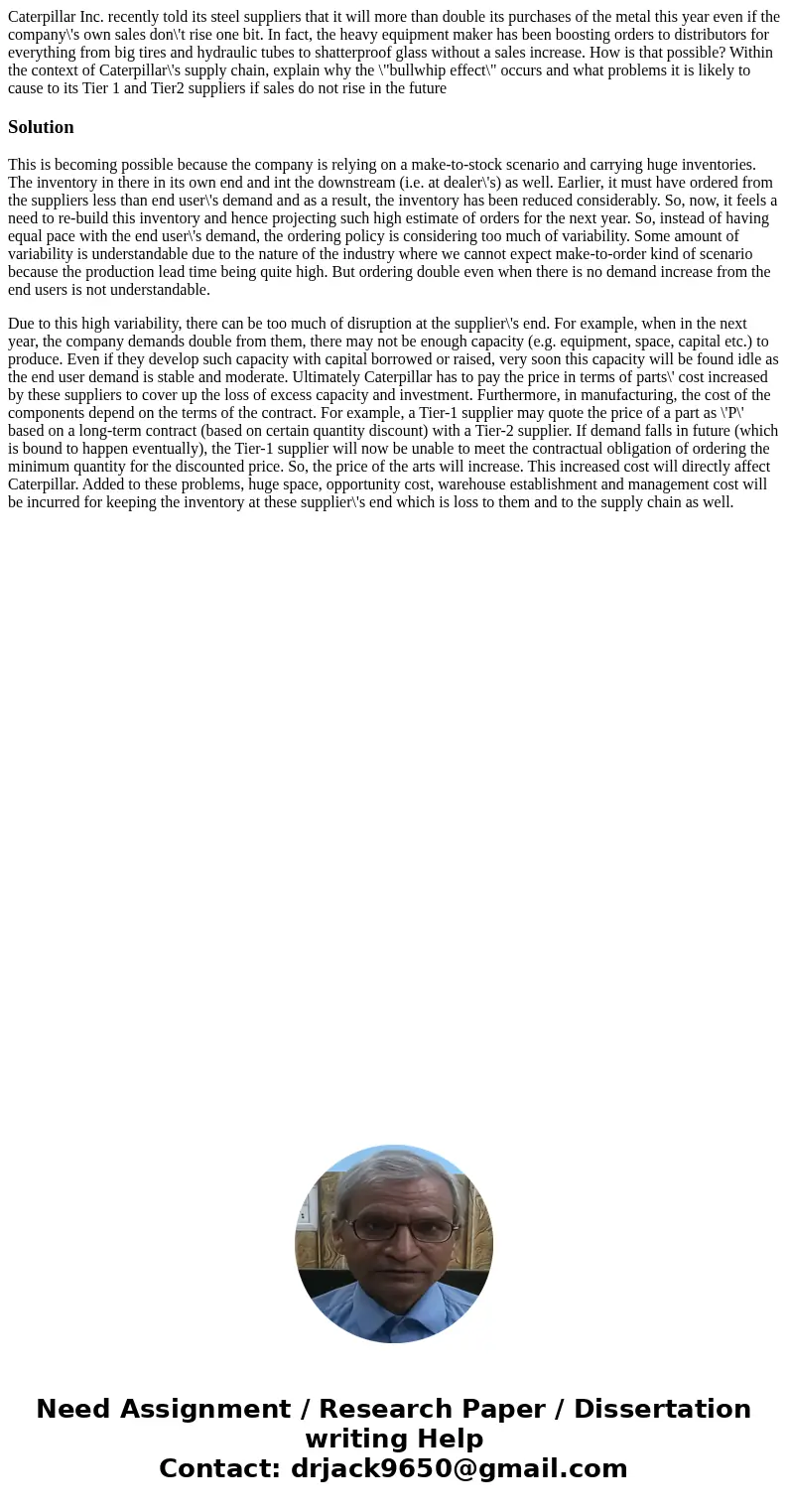Caterpillar Inc recently told its steel suppliers that it wi
Solution
This is becoming possible because the company is relying on a make-to-stock scenario and carrying huge inventories. The inventory in there in its own end and int the downstream (i.e. at dealer\'s) as well. Earlier, it must have ordered from the suppliers less than end user\'s demand and as a result, the inventory has been reduced considerably. So, now, it feels a need to re-build this inventory and hence projecting such high estimate of orders for the next year. So, instead of having equal pace with the end user\'s demand, the ordering policy is considering too much of variability. Some amount of variability is understandable due to the nature of the industry where we cannot expect make-to-order kind of scenario because the production lead time being quite high. But ordering double even when there is no demand increase from the end users is not understandable.
Due to this high variability, there can be too much of disruption at the supplier\'s end. For example, when in the next year, the company demands double from them, there may not be enough capacity (e.g. equipment, space, capital etc.) to produce. Even if they develop such capacity with capital borrowed or raised, very soon this capacity will be found idle as the end user demand is stable and moderate. Ultimately Caterpillar has to pay the price in terms of parts\' cost increased by these suppliers to cover up the loss of excess capacity and investment. Furthermore, in manufacturing, the cost of the components depend on the terms of the contract. For example, a Tier-1 supplier may quote the price of a part as \'P\' based on a long-term contract (based on certain quantity discount) with a Tier-2 supplier. If demand falls in future (which is bound to happen eventually), the Tier-1 supplier will now be unable to meet the contractual obligation of ordering the minimum quantity for the discounted price. So, the price of the arts will increase. This increased cost will directly affect Caterpillar. Added to these problems, huge space, opportunity cost, warehouse establishment and management cost will be incurred for keeping the inventory at these supplier\'s end which is loss to them and to the supply chain as well.

 Homework Sourse
Homework Sourse